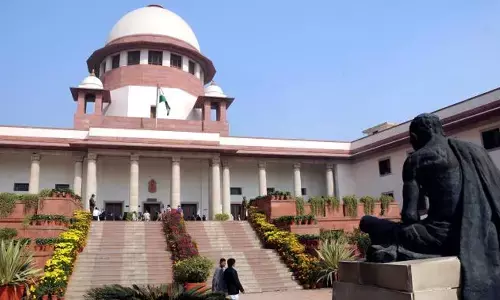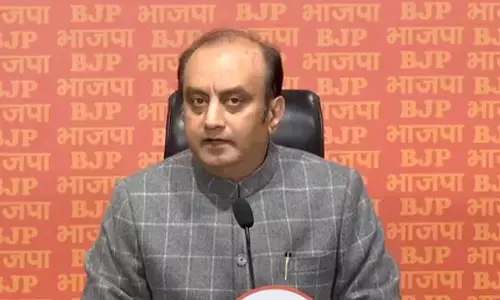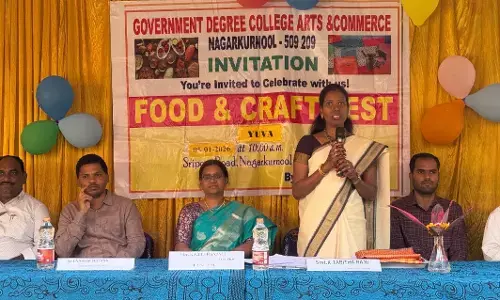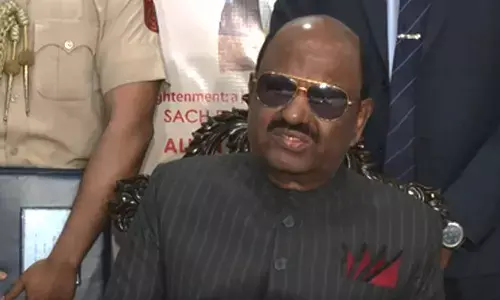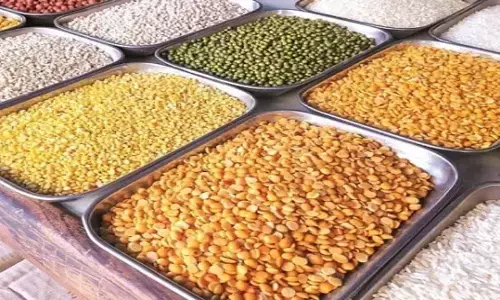PMs’ varied approaches to ‘Press Meets’

Essence of a Twitter (X) Post by 'Churumuri', that Prime Minister Narendra Modi gave at least 26 interviews in 30 days (After announcement of election schedule) to ‘Newspapers, News Channels and News Agencies’ revealing a staggering ‘Asymmetry of Media Coverage’ in favour of BJP in the General Elections, is an interesting evidence-based observation.
Essence of a Twitter (X) Post by 'Churumuri', that Prime Minister Narendra Modi gave at least 26 interviews in 30 days (After announcement of election schedule) to ‘Newspapers, News Channels and News Agencies’ revealing a staggering ‘Asymmetry of Media Coverage’ in favour of BJP in the General Elections, is an interesting evidence-based observation.
In fact, such ‘Interview Spree’ continued subsequently too. Even in the 2019 General Elections, Modi preferred his ‘Fair Share of Interviews’ to ‘Ten Print and four Television Media’ over a 20-day period. Fair Enough!!!
Every Prime Minister has his or her own ‘Approach to Media.’ Nevertheless, the worldwide acknowledged practice has been, ‘Frequent Media Interfaces’ either through ‘Individual or Group Interviews’ or ‘Press Meets’ with selected or large group of correspondents. But, undoubtedly, Press or Media Meets, are ‘The Best Means’ of conveying detailed information on the broad policy framework of government, to many, through ‘Initial Briefing’ followed by ‘Question Answers’ rather than in single press release or individual or group interviews to select few.
Preferences of individual Prime Minister-Past or Present- on frequent interface with media varied and, perhaps, all are ‘Right in their Own Way.’ For instance, Narendra Modi held his ‘First and Only Press Conference’ in May 2019, but did not answer a single question, and instead BJP President Amit Shah did the job on his behalf. ‘Right or wrong,’ information reveals that Narendra Modi has not taken questions from journalists at any press conference in India since he took office. Abroad, he did, once during his visit to UK in 2015 and once to USA in 2023. He answered ‘Just Two Questions’ by journalists in the White House. Even amidst global pandemic, Modi preferred ‘No Press Conference and no Questions.’ Fair Enough!!!
Reuters News Agency, ‘Precisely Describing’ Modi as one of India's ‘Most Gifted Political Orators’ noted that he never addressed a news conference in India, though gave many one-on-one interviews to local media. ‘Narendra Modi’s enduring aversion to Press Conferences, borders on Willful Negligence and Apathy’ according to Shravan Raghavan, former Editor in Chief, Statecraft, a global affairs daily. Modi's only unscripted interview as PM, according to him, was with Bollywood superstar Akshay Kumar!!!
Dr Manmohan Singh, whom Modi succeeded, was far more accessible to press, meeting them regularly, and on every foreign visit he undertook, had press conferences on return. Despite this, he was often criticised by BJP for his silence to the media. To his credit, Manmohan Singh on completion of first 100 days in office, addressed a Press Conference, the first one addressed by any PM in 13 years after PV Narasimha Rao did so within a year of his becoming PM in 1991.
According to Pankaj Pachauri, Information and Communications Advisor to Manmohan when he was PM, on 3rd January 2014, in the last Press Meet by an Indian PM in India, Singh ‘Fielded over 62 Questions from 100 Journalists.’ Sharing this Twitter (X) post by Pachauri, Congress MP Manish Tewari said that during his 10-year tenure, Manmohan held press conferences 117 times. What a striking difference between him and his successor Modi!!!
P V Narasimha Rao who stayed in office for full five years, avoided formal press conference after his maiden venture on his becoming PM. When Singh faced the media in September 2004, he in fact, revived the ‘Great Tradition’ dating back to the ‘Nehru Era’ when the Prime Minister Nehru addressed journalists frequently. The Meet-the-Press was open to accredited correspondents and photo journalists, usually held at Vigyan Bhavan. Media representatives were asked to raise placards to identify themselves before asking question.
During 17 years in office as the first PM, Jawaharlal Nehru with his unequivocal commitment to press freedom held frequent press meets, often referred as ‘Monthly Press Conferences.’ According to journalist and author of Indira Gandhi’s biography, late Inder Malhotra, ‘Jawaharlal Nehru's Celebrated Press Conferences’ were a unique institution of an ‘Exhilarating Combination of Information, Education and Entertainment’ the like of which has never been seen after him. A large-hearted Nehru always enjoyed and relished sarcastic ‘Shankar Cartoons’ on him, at times subtly critical, by one of the most famous cartoonists of his time, K Shankar Pillai. Nehru suggested to him once, 'Don’t spare me Shankar.’ Literally, Shanker never spared him!!!
Lal Bahadur Shastri faced a battery of microphones which were set up during his first press conference. According to Aroon Purie, Padma Bhushan awardee in Journalism, Indira Gandhi's interviews to Indian news people can be counted on the fingers of one hand. It was standard practice for Indira Gandhi to give a ‘Curtain-Raising Interview’ to a journalist from a country that she was visiting. Western newsmen, in particular, had little problem in gaining access to her protected quarters in Parliament House or South Block. Indian journalists were able to get to her only in her press conferences, which too, later, dwindled in frequency, wrote Purie.
Rajiv Gandhi held the ‘First Nationally Televised Live Press Conference’ by an Indian Prime Minister on July 7, 1985. He answered more than 30 questions in slightly over an hour. At that time, Gandhi's plan was to make televised press conferences a regular feature. He held more than 60 press meets. Indira Gandhi to begin with was fairly regular, as was Rajiv Gandhi until Bofors controversy. VP Singh addressed just one press conference in 1989.
Between 1994 and 2004, none of the Prime Ministers, HD Deve Gowda, IK Gujral and Atal Bihari Vajpayee, held any press conferences, indicating that this convention of ‘Disinclination to Speak to the Media’ was perhaps established far before Modi. Deve Gowda and IK Gujral had shorter tenures. Neither really had the time to settle and come before the media. Vajpayee did not address any formal press conference in Delhi even once in six years he held office. His interactions with journalists were brief, and open-ended. However, interestingly, during his sojourn to his Lucknow Lok Sabha constituency, Vajpayee held press conferences.
Genesis-wise and in the global aspect, if one looks at academically, USA President Woodrow Wilson held the ‘First Ever Press Conference’ in 1913. Since 1920s, it became the primary form of ‘Presidential Communication’ with American people. Warren G Harding began to hold public press conferences twice a week. Franklin D Roosevelt initiated holding long and informal press conferences in the Oval Office. Harry Truman reduced press meets to once a week and became more scripted. John F Kennedy became the first president to hold a live televised news conference. Lyndon B Johnson changed the nature of press conferences to impromptu sessions. Since 1969, The White House Office of Communications was established, and Press Briefing Room was created, holding regular monthly press conferences. This is the story in USA.
Notwithstanding all this, in India, unlike in the past, and to be more precise immediately post-independence, currently, and 75 years after independence, in the ever-changing ‘Dishonest, Unethical, and Crooked Political and Social Ethos’ that includes, passively if not actively, the ‘Role of Media’ or the so called ‘Fourth Estate’ predominantly owned by vested interests, that crudely guides, directs, and remotely controls their employee journalists, ‘Does a Press Conference have any logic or any sense?’ No precise answer, perhaps!!!
Media by and large is monopolized by Big Business or by regional or national political parties directly or indirectly, with huge investments. In press conferences, biased journalists often question not in the ‘Interest of Public’ at all, but always ‘What interests Public’ or ‘Sensational’ that inclines to annoy the person holding a press meet, not to speak of the stature of Prime Minister. Hence, if Jawaharlal Nehru was ‘Right in His Own Way’ then, Narendra Modi, too, is equally ‘Right in His Own Way’ now, irrespective of whether ‘Frequent or Infrequent Press Meets.’ Only approaches rightly varied!!!








